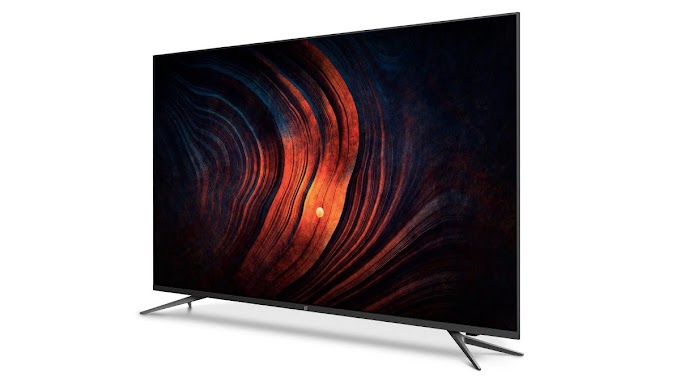The Asus TUF Gaming A15 is targeted at gamers with entry-level budgets, but that doesn't mean there's anything ordinary about it. This model is the first laptop we're reviewing with a 4000-series AMD Ryzen Mobile processor, which definitely helps to set it apart in the market. AMD has promised that this generation can easily hold its own despite Intel's virtual monopoly in the laptop market. We'll be paying attention to this, but there's also a lot more to take into account. Asus has launched this laptop with a lot of variants, and there are plenty of features that should appeal to gamers.
As the follow-up to the well priced and popular TUF Gaming FX505, the new TUF Gaming A15 claims to be slimmer and lighter, while offering up-to-date hardware, immense customisability, and of course some design elements just for gamers. As its name suggests, physical toughness is also a focus of this series. However as we've seen quite often, powerful laptops can appeal to audiences beyond gamers, including creative professionals and students. We're going to see what Asus has managed to achieve here, and whether the hardware and features are competitive enough to make this a strong recommendation.
Asus TUF Gaming A15 (FA566) options and prices
Asus has created the new A15 name to simplify its alphanumeric naming scheme, and there are actually two models – the FA566 (Fortress Grey) and FA506 (Bonfire Black) – that will be sold as the TUF Gaming A15. There will be slightly different configuration options for each, and some configurations will primarily be available offline while others might be targeted at online buyers. Bonfire Black is a more traditional “gamer” aesthetic in textured plastic with sharp lines and red accents, while Fortress Grey is more subtle with a metal finish and can blend in more easily.
The 15.6-inch TUF Gaming A15, and its larger 17-inch A17 sibling, have been launched in a variety of configurations in India. There will also be Intel-based equivalents sold as the TUF Gaming F15 and F17.
The range starts at Rs. 60,990 for the 15-inch TUF Gaming A15 (FA506) in Bonfire Black, and that's also the same starting price for the 17-inch TUF Gaming A17 (FA706). These entry-level options feature the AMD Ryzen 5 4600H CPU, Nvidia GeForce GTX 1650 GPU, a 256GB SSD, and a 60Hz full-HD screen.
At the top end, you can get up to a Ryzen 9 4900H CPU, GeForce RTX 2060 GPU, a 144Hz full-HD screen, and a 1TB SSD plus a hard drive. The availability of different configurations will vary, and such a tricked-out configuration did not seem to be in stock anywhere online at the time of our review. The price would of course be considerably higher.
All variants feature a 48Wh battery – in a preview prior to CES late last year, Asus had brought up the idea of offering different battery capacities in different variants (probably trading off the space used by the hard drive), but this would have made the lineup more confusing, and so the plan has been dropped.
Asus TUF Gaming A15 (FA566): AMD Ryzen Mobile 4000-series
AMD has seen a number of wins in the desktop CPU space, especially with enthusiasts, but still has to convince laptop OEMs to take more risks developing and selling entire product lines around Ryzen processors. The Ryzen Mobile 4000-series might be slightly confusing in terms of naming, because these CPUs are based on the same Zen 2 architecture as the desktop Ryzen 3000-series, and do not represent a new generation. AMD has used a modular chiplet-based layout with integrated Radeon Vega graphics, and a and 7nm manufacturing process.
Of course AMD's success depends on partners like Asus – buyers look for the overall package and experience, and that means designs have to be slick, cooling mechanisms have to be effective, and other components can't cause bottlenecks. It will be hard to judge how much of the TUF Gaming A15's overall performance can be attributed directly to the CPU, but if it's bad, we'll know.
For the TUF Gaming A15, Asus has chosen AMD's 45W H-series models, the six-core Ryzen 5 4600H, and the eight-core Ryzen 7 4700H, and Ryzen 9 4900H. All models feature multi-threading for twice the number of threads. Unlike their desktop counterparts, these CPUs do not benefit from the fast new PCIe 4.0 interconnect, and use PCIe 3.0 like the rest of the industry. These chips are classified as SoCs, with integrated IO, storage and memory controllers, and hardware for sensors, power management and display output. All of this is tied together using AMD's Infinity Fabric.
Asus TUF Gaming A15 (FA566) design and usability
There's a lot to like about the TUF Gaming A15. For an entry-level laptop, it looks fairly slick and modern. The Fortress Grey lid finish that we have isn't as subtle as we would have liked – the fake plastic rivets in the corners and large tattoo-like TUF logo in the centre definitely call attention to this laptop – and some might find it almost cheesy. The outer lid is metal, while the rest of this laptop's body is plastic.
Flipping the lid up, we see relatively slim borders around the screen, except for a little tab at the top to make room for a webcam. This also lets you open the lid easily, and we like this better than a displaced or missing webcam. The lid is held up by hinges at the two ends and the thick bottom chin is somewhat visually reduced by a large cutout across the middle. When the lid is down, this lets you see the laptop's status LEDs from the outside. The lid does wobble slightly and can be bent enough to warp the screen.
Asus TUF Gaming A15 (FA566) performance and gaming
The combination of the Ryzen 7 4700H, GeForce GTX 1660 Ti, 16GB of RAM, and NVMe SSD made for a very smooth usage experience across all kinds of workloads. General performance was snappy, and that perception might also have been helped by the screen, which runs at 144Hz even on battery power.
By default, Asus sets this laptop to Performance mode, and that's how we conducted all our testing. When running on battery power, the Turbo mode isn't available. You can also cycle between these modes using a Fn shortcut on the keyboard.
The full-HD screen is non-reflective, which is something we always like. Viewing angles are fine, and it's bright enough for comfortable use indoors. Colour reproduction is limited to 45 percent of the NTSC gamut which is good for general use and gaming, but might not be enough for pro-level photo and video work. The speakers can get quite loud and the sound doesn't distort at high volumes, but there's very little bass. Voices and game effects are clear, but music sounds somewhat hollow and dull.












0 Comments